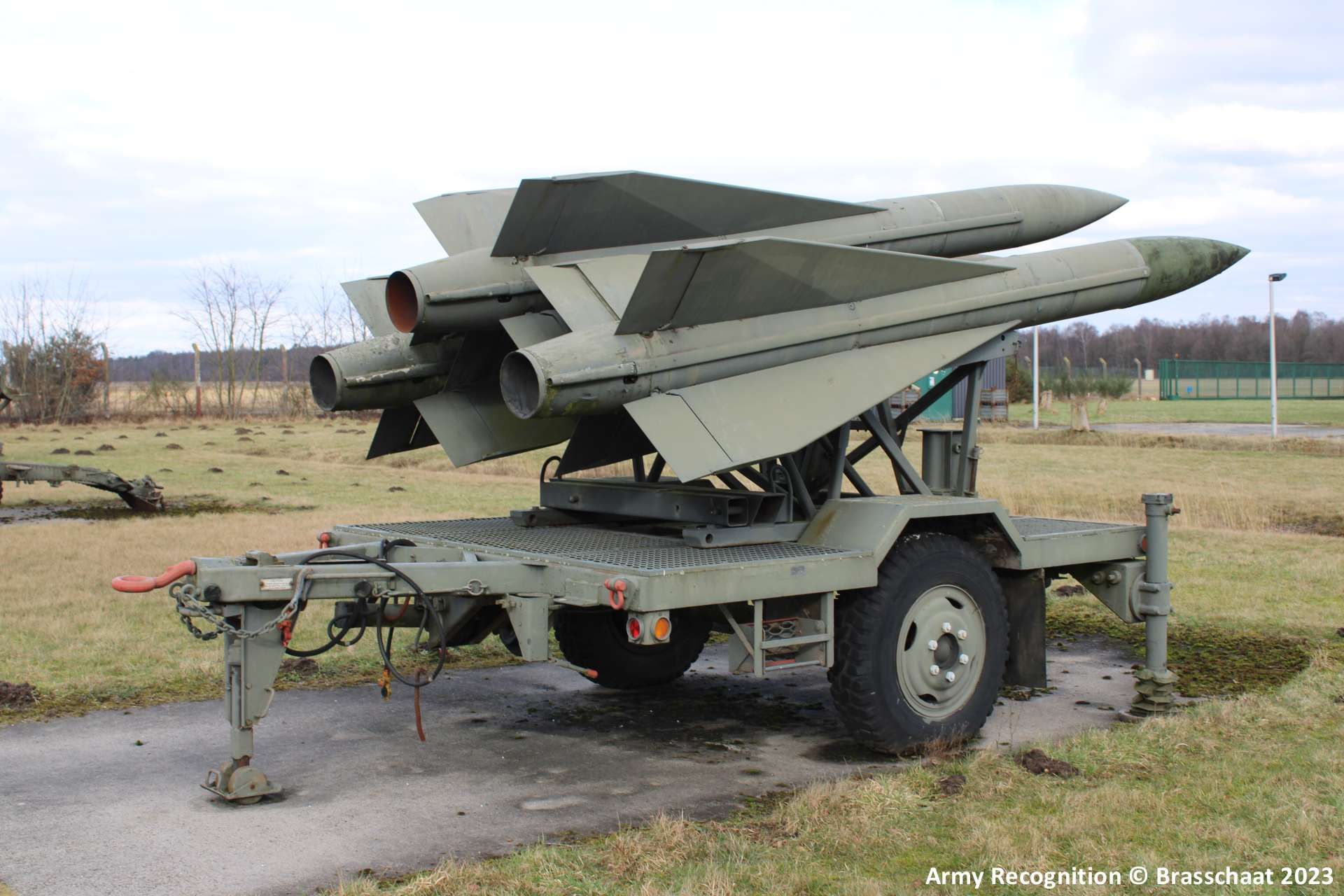Breaking News
Former Raytheon official confirms transfer of Taiwan’s MIM-23 missiles to Ukraine with US approval.
On November 4, 2024, Tony Hu, a former representative for Raytheon in Taiwan, confirmed that Taiwan’s MIM-23 Hawk medium-range surface-to-air missile systems were transferred indirectly to Ukraine. According to Hu, these systems performed effectively in their new operational environment.
Follow Army Recognition on Google News at this link

The transfer of Taiwan’s Hawk systems to Ukraine was facilitated by a U.S.-managed third-party mechanism called the Worldwide Warehouse, which allows allied countries to transfer equipment among themselves with U.S. authorization. (Picture source: Wikimedia/Xuan Shisheng)
In a recent interview, Hu described his involvement in Taiwan’s air defense initiatives, including his role in facilitating defense system upgrades and advocating for the acquisition of the NASAMS (Norwegian Advanced Surface-to-Air Missile System) for Taiwan. Hu began recommending NASAMS during his time with Raytheon, seeing it as a potential fit for Taiwan’s evolving defense strategy.
Hu’s early work at Raytheon involved supporting the Hawk XXI missile system as part of Taiwan’s defense plans. Initially, he viewed Hawk as a viable option to enhance Taiwan’s defensive capabilities. However, over time, he came to support NASAMS as a more adaptable and capable system suited to Taiwan's changing defense needs. Hu argued that NASAMS could provide effective ground-based air defense, particularly in scenarios where Taiwan’s air operations might be limited. Meanwhile, he continued overseeing Hawk inspections and updates to maintain operational readiness until NASAMS could be deployed.
The transfer of Taiwan’s Hawk systems to Ukraine, Hu explained, was facilitated by a U.S.-managed third-party mechanism called the “Worldwide Warehouse.” This system allows allied countries to transfer equipment among themselves with U.S. authorization. Although Hu did not specify the countries involved, he confirmed that Taiwan’s Hawk missiles were made available for allies in need through this process.
Regarding Taiwan’s air defense strategy, Hu noted that NASAMS aligns with a layered defense model that addresses threats across various altitudes and ranges. According to Hu, NASAMS could complement existing systems, adding an additional layer of defense alongside other interceptors and radar units. He also pointed out that some of Taiwan’s older systems, such as the Tianbing missile system, have faced operational issues due to parts shortages and outdated technology. Attempts to source replacement components for the Tianbing were unsuccessful, leading Hu to recommend NASAMS as a feasible, updated alternative.
Hu described the challenges of advocating for new defense systems in an evolving regional and international environment. He noted that recent changes in NATO’s stance on Taiwan reflect a shift, with European nations increasingly open to defense collaborations. Taiwan is expected to receive additional NASAMS units, and Hu emphasized the potential role of NASAMS in enhancing Taiwan’s air defense capabilities, noting its possible place within Taiwan’s broader defense framework, particularly as the island phases out older systems such as the MIM-23 Hawk.

The Hawk missile system's history with Taiwan dates back to the aftermath of the 1958 Taiwan Strait Crisis, when the United States deployed Hawk missiles to Taiwan in 1960 to support the island’s air defense. (Picture source: Army Recognition)
On June 29, 2023, Taiwan’s Air Defense and Missile Command decommissioned the Hawk missile system, ending 63 years of service. Lieutenant General Sun Lien-sheng, Deputy Commander of the Air Force, recognized the Hawk’s role as Taiwan’s primary low- to medium-altitude air defense system, especially in maintaining airspace security over the Taiwan Strait. Taiwan had started phasing out the Hawk system in 2015, favoring the domestically developed Sky Bow III system instead. Initial reports suggested that the retired Hawk missiles might be transferred to Ukraine, with about 100 Hawk launchers potentially available. However, Taiwan’s Defense Minister later stated that the missiles would be dismantled rather than transferred.
The Hawk missile system's history with Taiwan dates back to the aftermath of the 1958 Taiwan Strait Crisis, when the United States deployed Hawk missiles to Taiwan in 1960 to support the island’s air defense. Taiwan’s "Second Air Defense Missile Battalion" was quickly formed, and personnel received specialized training on the new system. By 1964, operational control of the Hawk systems was transferred to the Republic of China Army under a U.S. military aid agreement, establishing the Hawk as Taiwan’s main air defense weapon. The U.S. provided additional Hawk battalions over the years to support Taiwan’s defense requirements, and even after the end of formal diplomatic relations between the U.S. and Taiwan, the island acquired a third Hawk battalion.
In the 1980s, Taiwan modernized its Hawk systems to a third-generation level and supplemented its inventory with retired MIM-23J missiles from the U.S. Marine Corps. However, in the early 21st century, Taiwan began transitioning to the domestically developed Tien Kung III missile, eventually leading to the Hawk system’s decommissioning by June 29, 2023. The Green Island Assault Platoon of the Xiaogang Company was the last unit to operate the Hawk, marking the end of its role in Taiwan’s air defense as the Tien Kung III system assumed these responsibilities.
The MIM-23 Hawk, developed by Raytheon, is a medium-range surface-to-air missile (SAM) system designed to offer mobile, adaptable air defense. First introduced by the U.S. Army in 1959, the Hawk was intended as a more compact and mobile alternative to the MIM-14 Nike Hercules, with low-altitude capabilities supported by continuous-wave radar technology. The Hawk’s kill probability, initially rated at 0.56, was raised to 0.85 through the Improved Hawk (I-Hawk) system in 1971, which brought radar and guidance enhancements.
The Hawk system underwent several upgrades, including a Product Improvement Plan (PIP) that introduced advanced radar, countermeasures, and improved jamming resistance. While the U.S. replaced the Hawk with the MIM-104 Patriot in 1994, the Hawk system has continued to see global use in various conflicts, including the Iran-Iraq War and the Gulf War. Approximately 40,000 Hawk units were produced during its service life, and later versions, such as Hawk XXI, incorporated modern radar technology for enhanced detection and engagement capabilities.


























